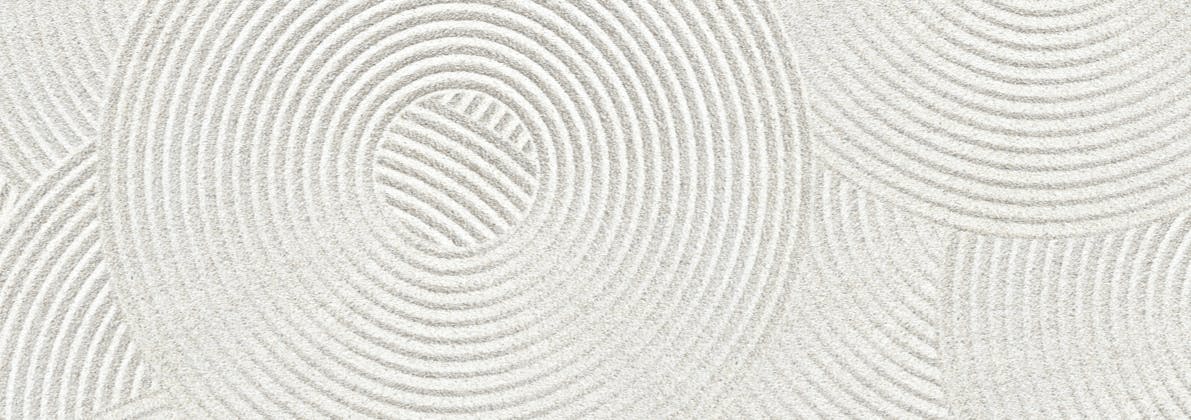
Facial rejuvenation procedures have evolved significantly over the years, offering patients more natural, longer-lasting results with minimal downtime. Among these advanced procedures, the Deep Plane Facelift has emerged as one of the most effective techniques for lifting and repositioning facial tissues, providing a youthful and refreshed appearance. However, achieving the ideal facial aesthetic often requires more than just lifting tissues—it also demands the restoration of lost facial volume. This is where fat grafting comes into play. In this post, we’ll explore the role of fat grafting, particularly the use of micro fat and nano fat, in enhancing Deep Plane Facelift surgery results. We’ll discuss how these techniques work, the benefits of fat grafting, and why the combination of these methods with a facelift can produce superior, natural-looking outcomes.
Understanding the Deep Plane Facelift
Before diving into fat grafting, it’s essential to have a clear understanding of what a Deep Plane Facelift entails. Unlike traditional facelifts that focus on tightening the skin, the deep plane technique works beneath the SMAS (superficial muscular aponeurotic system) layer of the face. This approach lifts and repositions both the skin and deeper structures, such as the muscles and ligaments, leading to a more
comprehensive and natural-looking lift. The primary benefit of the Deep Plane Facelift is that it creates longer-lasting and more natural results by addressing the underlying causes of sagging rather than just the superficial skin. Patients often look significantly rejuvenated without the “over-pulled” or tight appearance sometimes associated with traditional facelifts.
The Importance of Volume in Facial Rejuvenation
As we age, facial volume loss plays a significant role in the appearance of aging. This loss can make the face look gaunt, hollow, and tired, even in patients who do not have significant sagging skin. Volume loss occurs due to the natural decline of fat in the face, which often results in hollow cheeks, sunken temples, and deep folds around the mouth. While a Deep Plane Facelift addresses sagging tissues by lifting and repositioning, it does not inherently restore lost volume. This is where fat grafting becomes a powerful complement. By restoring volume to key areas, fat grafting can rejuvenate the face, smooth out wrinkles, and provide a fuller, more youthful appearance.
What Is Fat Grafting?
Fat grafting, also known as fat transfer, is a procedure that uses a patient’s fat to restore lost volume in various areas of the face. The process involves harvesting fat.
From areas of the body where it is plentiful (such as the abdomen, thighs, or flanks), purifying it, and then injecting it into areas of the face that have lost volume. Since the fat comes from the patient’s own body, there is no risk of rejection or allergic reaction, making it a safe and natural option for facial rejuvenation.
Fat grafting can be used to add volume to multiple areas of the face, including:
- Cheeks: To restore fullness and create a youthful contour.
- Nasolabial folds: To smooth out the lines between the nose and mouth.
- Jawline and chin: To enhance definition and correct sagging.
- Under-eye area: To reduce hollowness and the appearance of dark
circles.
Microfat vs. Nanofat: What’s the Difference?
While fat grafting has been used for many years, advancements in the procedure have led to the development of more refined techniques such as microfat and nano fat grafting. These terms refer to the size and structure of the fat particles that are harvested and reinjected into the face.
Microfat Grafting
Microfat refers to fat that has been harvested and processed in a way that preserves its integrity while reducing its size to smaller particles. This type of fat is ideal for adding volume to areas that require structure and fullness, such as the cheeks, temples, or nasolabial folds. Microfat grafting provides natural-looking, long-lasting volume and is particularly useful for addressing moderate to significant volume loss in the face.
Benefits of Microfat:
- Restores volume: Microfat grafting effectively restores volume in areas of
the face that have lost fat over time. - Natural appearance: Because the fat comes from the patient’s own body,
it integrates seamlessly with the surrounding tissues, creating a soft, natural result. - Longevity: Properly grafted fat can last for years, making it a long-term
solution for facial rejuvenation.
Nanofat Grafting
Nanofat is a more refined version of fat that has been emulsified and filtered down to an almost liquid consistency. Unlike microfat, nanofat does not provide significant volume. Instead, it is used for its regenerative properties, particularly in improving skin quality and reducing fine lines and wrinkles. Nanofat contains a high concentration of stem cells, which help stimulate collagen production, improve skin texture, and enhance overall skin health.
Nanofat is often injected superficially into the skin, making it ideal for treating fine lines around the eyes, mouth, and forehead, as well as improving the appearance of scars and skin discoloration.
Benefits of Nanofat:
- Skin rejuvenation: Nanofat helps improve the quality of the skin by stimulating collagen production, resulting in smoother, firmer skin.
- Stem cell benefits: The high concentration of stem cells in nanofat promotes tissue regeneration, which can help improve the texture and tone of the skin over time.
- Subtle refinement: While nano fat does not provide significant volume, it can be used to refine and enhance the results of other procedures, such as a facelift or microfat grafting.
Combining Fat Grafting with the Deep Plane Facelift
The combination of fat grafting with a Deep Plane Facelift is a powerful tool for achieving comprehensive facial rejuvenation. While the Deep Plane Facelift addresses sagging tissues by lifting and repositioning them, fat grafting restores lost volume and enhances facial contours, providing a more youthful and harmonious appearance. Here’s how the combination works:
1. Structural Lifting with the Deep Plane Facelift: The facelift repositions sagging facial tissues, restoring the natural position of the cheeks, jawline, and neck. This creates a more youthful facial structure but does not add volume to areas that have lost fat.
2. Volume Restoration with Microfat Grafting: Once the facial tissues have been lifted and repositioned, microfat grafting is used to add volume to areas that need it, such as the cheeks, temples, and nasolabial folds. This helps create a balanced, full appearance that complements the facelift results.
3. Skin Rejuvenation with Nanofat: Nanofat can be injected into the superficial layers of the skin to improve skin texture, reduce fine lines, and promote collagen production. This not only enhances the overall appearance of the skin but also helps smooth out any imperfections that may remain after the facelift and fat grafting.
The Benefits of Combining These Procedures
By combining a Deep Plane Facelift with microfat and nanofat grafting, patients can
achieve a more comprehensive and natural-looking result. Here are some of the key
benefits of this combination approach:
1. Natural-Looking Results: One of the primary goals of any facial rejuvenation procedure is to achieve natural-looking for results that do not look overly “done.” By combining the lifting and tightening effects of a Deep Plane Facelift with the volume restoration of fat grafting, patients can achieve a more balanced and youthful appearance without looking artificially pulled or overfilled.
2. Long-Lasting Outcomes: Fat grafting provides long-lasting results because the fat cells that survive the grafting processes are permanently integrated into the face. When combined with a Deep Plane Facelift, which also offers long-term benefits due to its ability to address deeper structures, patients can enjoy rejuvenation that lasts for many years.
3. Comprehensive Rejuvenation: While a facelift alone can address sagging tissues, it does not address volume loss or skin quality. By adding fat grafting and nanofat injections, patients receive more comprehensive rejuvenation that improves not only the contours of the face but also the quality and texture of the skin.
4. Improved Skin Quality: Nanofat grafting, in particular, offers the added benefit of skin rejuvenation. The stem cells present in nanofat help promote collagen production, improve skin elasticity, and reduce the appearance of fine lines, wrinkles, and scars. This leads to smoother, healthier skin that complements the overall facial rejuvenation.
5. Customizable Approach: Every patient’s facial aging process is unique, and combining these procedures allows for a fully customizable approach. Surgeons can tailor the amount of fat grafted and the areas treated based on each patient’s individual needs, ensuring that the results are both natural and personalized.
As facial rejuvenation techniques continue to evolve, the use of fat grafting—particularly micro fat and nanofat—in combination with the Deep Plane Facelift represents the pinnacle of facial surgery. This approach allows patients to achieve a more youthful, vibrant appearance by addressing multiple aspects of aging, including sagging tissues, volume loss, and skin quality. For those considering a Deep Plane Facelift, adding fat grafting to the treatment plan enhances the overall outcome.
The structural lift achieved by the facelift is beautifully complemented by the natural volumizing effects of microfat, while nanofat helps rejuvenate the skin by promoting collagen production and improving elasticity. This multi-dimensional approach ensures that the results are comprehensive, natural-looking, and long-lasting. With careful planning and the expertise of a skilled surgeon, this combination treatment can be tailored to each patient’s unique needs, offering customizable and natural rejuvenation. Patients who undergo these combined procedures often report not only looking younger but also feeling more confident and refreshed.
In summary, the combination of Deep Plane Facelift and fat grafting—specifically microfat and nanofat—is a highly effective strategy for reversing the signs of aging in a way that looks and feels natural. This synergy addresses both structural changes and surface-level improvements, offering results that can last for years and significantly enhance facial harmony.
For anyone considering facial rejuvenation, it’s essential to consult with a board-certified surgeon who specializes in these advanced techniques to ensure the best possible results. The journey to a more youthful and revitalized appearance is a transformative experience that combines artistry with science, offering a true reflection of how youthful and vibrant you feel inside. By integrating volume restoration, skin rejuvenation, and structural lifting, the Deep Plane Facelift with fat grafting is the gold standard for achieving a refreshed, naturally youthful look that stands the test of time.



